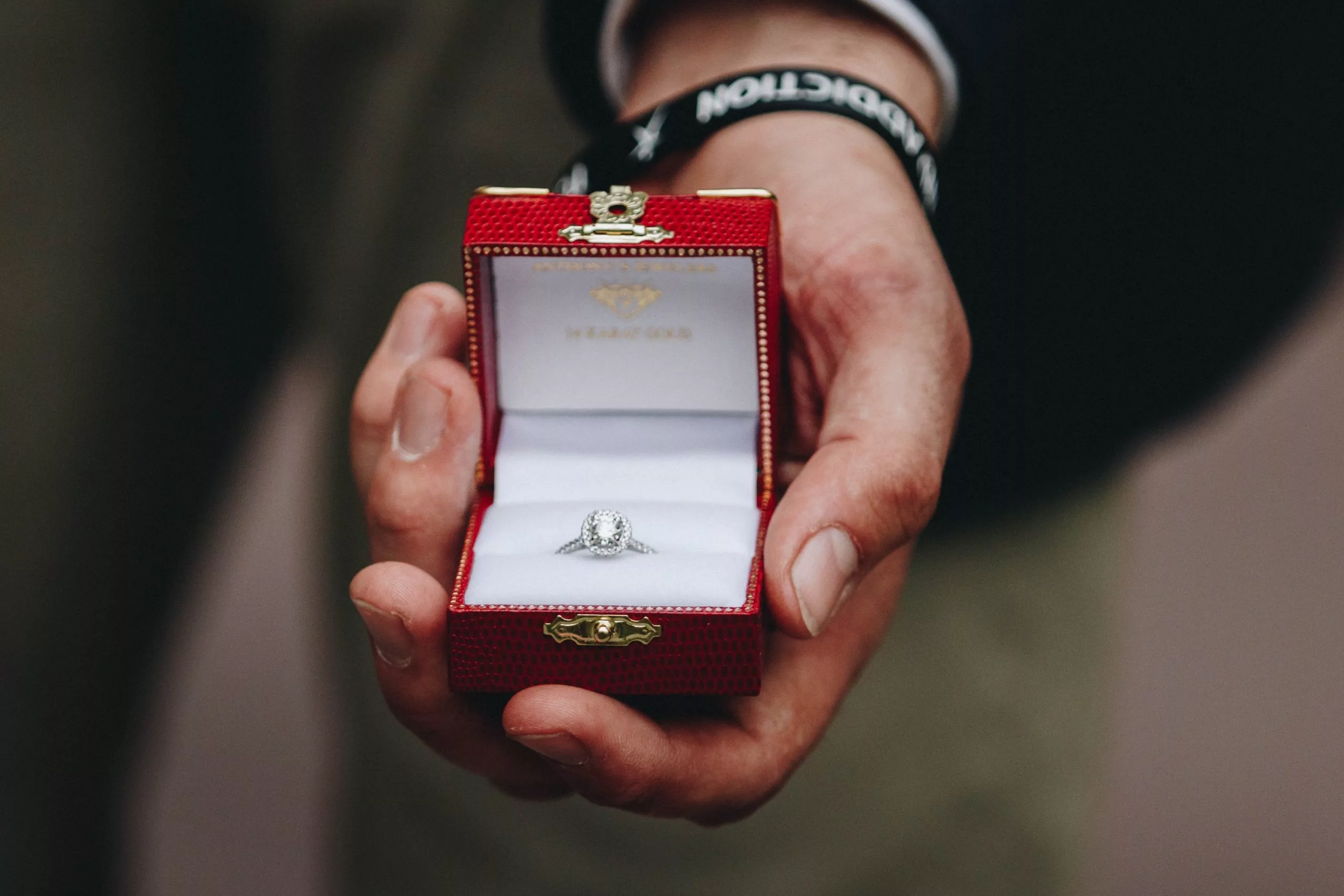An estimated 3.7 million people have died in wars funded by diamonds. Millions more around the world are being poisoned by mercury from gold mining and destroying the environment just so they can scrape together enough money to survive.
These days, particularly in response to millennial concerns,”ethical” or “responsible” jewelry is a hot emerging trend. Nearly every retail jeweler is trying to hop on the responsible bandwagon.
The misinformation in the market around “eco-friendly” and “sustainable” claims is so extensive that even the US Federal Trade Commission (FTC) is issuing warnings to jewelers. But what’s even worse is the zeitgeist behind this new eco-friendly/socially-responsible jewelry story.
As I explore in my Ethical Jewelry Exposé: Lies, Damn Lies and Conflict Free Diamonds, “ethical” jewelry in North America focuses on certifying existing supply chains that have been in place for decades.
It’s not that the issues related to resource cursed producer communities and small-scale miners are ignored. That would be too risky on a public relations front. Rather, high-profile initiatives that have almost no market impact are heavily promoted, creating seemingly positive stories to let the public know that jewelers are doing their part.
Typically, customers who believe that they are part of the solution are merely supporting the same neocolonial practices that have resulted in so much misery and environmental destruction. One of the most profound metaphors of disconnect in our time is the engagement ring of gold and diamond. It represents love, fidelity, hope, and commitment — yet its sourcing may tell a different story.
The keystone to the narrative of North American ethical jewelry consists of two propositions: “conflict-free diamonds” and “recycled precious metals.” Let’s explore how this takes place in the context of diamonds and gold, starting with diamonds.
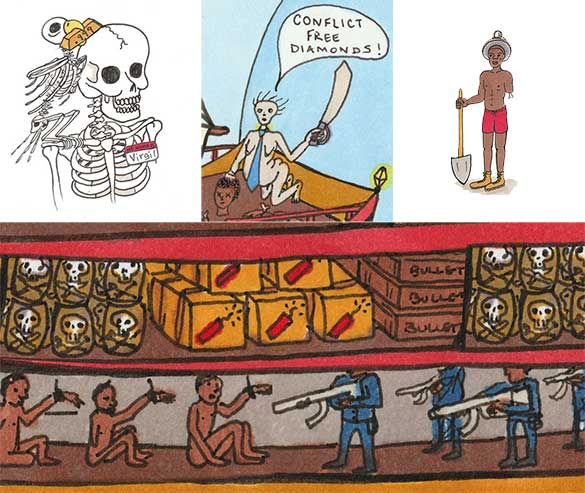
(Image courtesy of the author)
Lies, Damn Lies, and Conflict-Free Diamonds
The term “conflict-free diamonds” has essentially allowed jewelers to, as the New York Times reported in 2000, turn the blood diamond controversy into a virtue. No one in the jewelry sector has ever been held responsible for funding wars with diamonds. No restitution has ever been made to impacted communities.
Instead, we have ongoing use of the term “conflict-free diamonds,” which in itself is a cover-up of crimes hidden in plain sight. Every time I hear the term “conflict-free diamonds,” I am reminded that African lives don’t matter. If they did, we’d see truth, reconciliation, and restitution.
This disconnect between symbolism and sourcing is amplified by the rising popularity of “conflict-free,” lab-grown diamonds. They make hay out of their “conflict-free” proposition — leading the concerned millennial about to get married away from the plight of small-scale diamond miners whose lives have not change one bit since the Blood Diamond film was released in 2006.
As a jeweler, I know that simply telling most customers a diamond is “conflict-free” is enough to assuages their concerns. Yet the Kimberley Process, which certifies diamonds as “conflict-free,” does not account for human rights abuses, child labor, or environmental issues. It is widely denounced by independent agencies as completely ineffective.
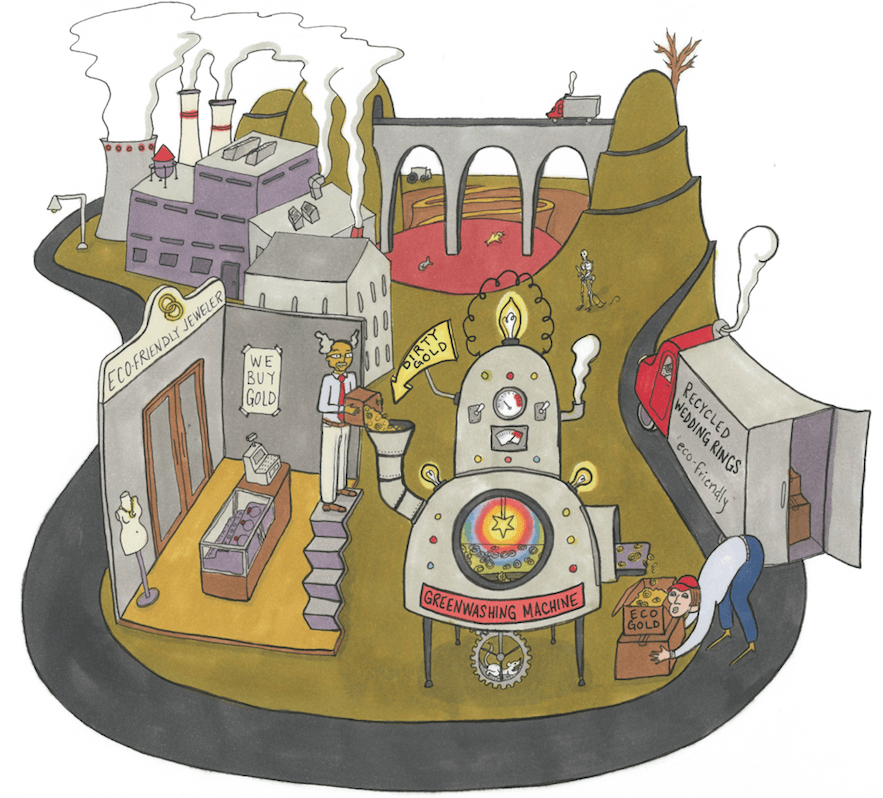
(Image courtesy of the author)
Recycled precious metals
The second misleading narrative that jewelers use is the ethical recycled gold proposition. It links the use of recycled metal to reduction of mining, creating a specious argument. This argument is clearly made in this screenshot by Brilliant Earth, the company that dominates the ethical jewelry market in North America with numerous stores and over a million visits a month to their website.
While it is true that recycled paper reduces the need for more trees to be cut down, there is no evidence that recycled gold reduces mining activity. Large-scale mining produces 80 percent of the world’s gold supply. The operation of these mines depends upon the price of gold, the amount of ore in the rock, and several other factors. They don’t care about whether you purchase a recycled gold wedding ring or not. Gold always has value to shareholders, and it will always be mined.
As for small-scale gold mining, which produces 20 percent of the world’s gold supply while making up 90 percent of gold mining labor, these miners are not going to stop their digging because of recycled gold rings. They mine to feed their families — and as long as gold is being dug up, there will be a buyer waiting.
This photo I took in Kenya makes the point clearly:
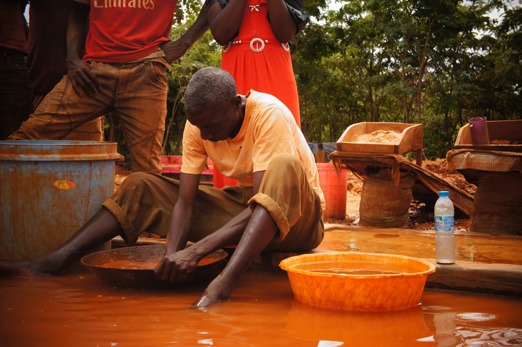
Every eco-friendly recycled gold wedding ring purchased means that this man will never receive support from organizations like Fairtrade that seek to improve the lives of small-scale miners through market forces. For every gram of gold, small-scale miners can release up to 3 grams of mercury into the environment. (Image courtesy of the author)
This man is mixing his hand in mercury, mud, and water. Small-scale gold mining is the second largest contributor to global mercury contamination, after coal-fired power plants. If his small-scale mine was Fairtrade certified, he would be wearing protective gear.
Every time someone purchases a recycled gold wedding ring, instead of a Fairtrade Gold wedding ring, they are choosing not to support an initiative which helps both men and their communities — and prevents global mercury contamination.
Erasing history
Underlying the gold and diamond narrative is a nefarious attempt to erase history. Imagine for a moment that the Pope were to say that all actions from priests prior to 2012 are absolved. The world would be outraged.
Yet, consider the Responsible Jewellery Council, the organization that is defining and certifying “responsible jewelry.” (By the way, the standards are also endorsed by Brilliant Earth.) The Council was founded by 14 companies in 2004, among them Rio Tinto, De Beers, BHP Billiton, Cartier, Newmont Mining, Signet Group, Tiffany & Co, Zales Corp, and Jewelers of America.
Together, they have written an encyclical, defining a “responsible jewelry” doctrine to their 1,100-plus members. Foundational to this doctrine is continuity, embracing a conservatism that protects their assets and current business practices while absolving the past.
In practice, this means that RJC member Anglo Gold Ashanti is forgiven for its activities in Ghana. This is just one of a more extensive list of RJC member companies whose social and environmental atrocities are well documented by watchdog groups.
In the new ethical/responsible jewelry world, social and environmental atrocities are often hidden behind the rhetoric of jobs and development, as well as high-profile charities and small-scale mining initiatives that create positive stories (read: very useful marketing material). This consumer-facing narrative lullabies the latent but potentially transformative energy in the market into a deep slumber.
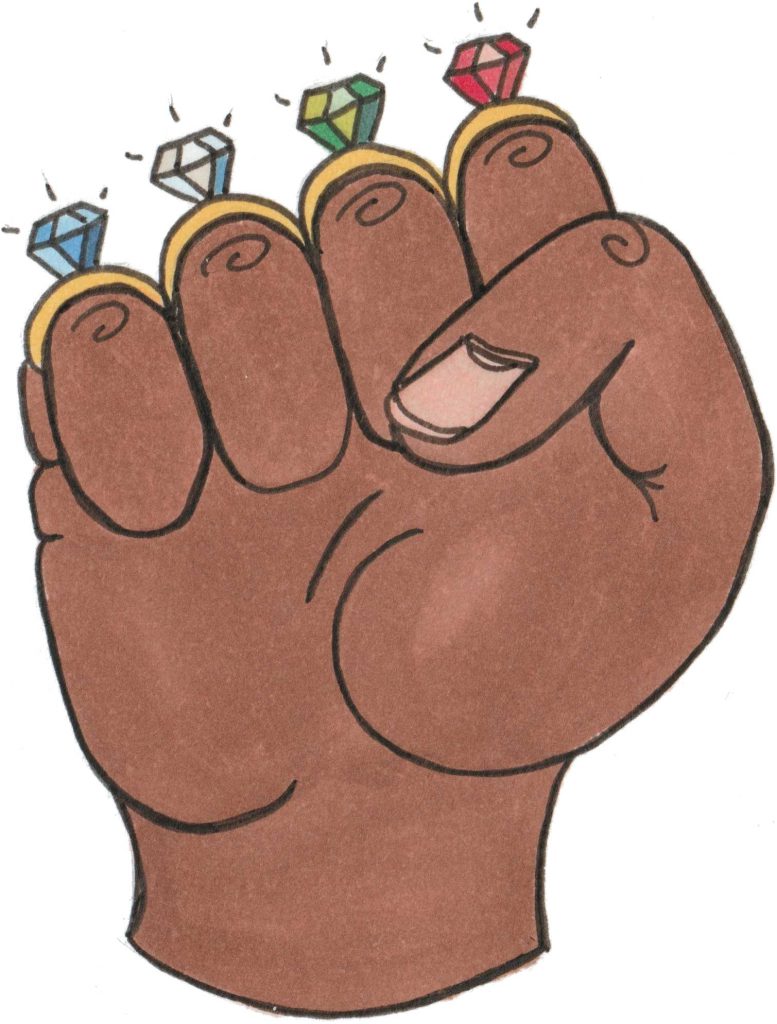
(Image courtesy of the author)
The road ahead
Dr. Martin Luther King, Jr. famously said, “True compassion is more than flinging a coin to a beggar; it comes to see that an edifice which produces beggars needs restructuring.”
If we want restructuring, the so called “ethical/responsible” jewelry movement must focus on impacted producer communities, the 100 million small-scale miners whose lives are characterized by exploitation, poverty, and horrendous environmental toxicity.
The question is: What can we do to transform the ethical jewelry movement in the US into something that breaks the deep patterns of exploitation and neocolonialism now masked behind a new ethical shine?
Fortunately, we have a successful model. In the UK, there are over 250 certified Fairtrade Gold jewelers. There, ethical jewelry — through Fairtrade — is tied to creating real benefit for producer communities. If Fairtrade Gold were to take hold in the US, hundreds of thousands of small-scale miners would be uplifted out of poverty. A new jewelry story would emerge.
In the US, I have been the only Fairtrade Gold jeweler since April 2015, despite my efforts to support a broader movement. Recently, in an effort to develop grassroots support, I’ve even launched a program which gives 20 percent of sales back to nonprofits that want to partner with my company.
I hope, one day, that a market based on Fairtrade Gold will be established. It would create a virtuous momentum. Larger companies driven by bottom-line practices, companies that are creating the current “responsible jewelry” narratives, will want to sell Fairtrade Gold — and other Fairtrade jewelry that creates benefit for small-scale producers — because they will see its certain profitability.
